Pilotless precision
Medical emergency? Push the button
Piper M600/SLS






The Malibu was a Continental-powered six-seater that was followed by the more powerful Lycoming-powered Mirage, Matrix, and M350 models. A big switch to turbine power came with the debut of the single-engine turboprop Meridian with Meggitt and Avidyne avionics and powered by a 500-shaft-horsepower Pratt & Whitney PT6A-42A engine. The M500 came next, essentially the same as the Meridian but with Garmin G1000 NXi displays and avionics.
There’s no substitute for power, so the M600 got a 600-shp, uprated PT6A-42A when it came out in 2016. That, a redesigned wing, and a 260-gallon maximum fuel capacity (a 90-gallon increase over the M500) gives the M600 the speed (274 KTAS), payload (658 pounds with full fuel), and range (1,300 nautical miles) that eluded its predecessors. By comparison, the M500 advertises 260 KTAS, 559 pounds, and 1,000 nm for those same values.
This is all very welcome, but the M600’s real selling point is its Halo autoland system, which is part of the airplane’s standard equipment package. It was the first airplane to be certified with the Autoland system. Developed by Garmin under its Autonomí brand of safety-enhancing technologies, this autoland system is designed to automatically land an airplane in the event of pilot incapacitation by hypoxia or other medical emergencies. (To be clear, it is not intended to conduct autoland instrument approach procedures of the type used by airliners and other large aircraft in Category III low—or zero—visibility conditions.)
Halo—and its requisite autothrottle—was certified by the FAA in the M600/SLS in May 2020, and by the European Union Aviation Safety Agency (EASA) in April 2021. Other manufacturers are also offering the Garmin Autoland system, under different names. In the Cirrus SF50 Vision Jet it’s called Safe Return. Daher calls its system in the TBM 940 HomeSafe. By the way, Piper’s Halo branding isn’t an acronym; it represents the notion of an ever-vigilant guiding angel. “SLS,” however, stands for safety, luxury, and support.
I met up with Dan Lewis, Piper’s manager of Latin American regional sales, at Piper headquarters on the Vero Beach, Florida, Regional Airport, eager to see the Halo in action. Lewis said he’s done “probably 130 demos, to about 75 customers,” and promised a full demo, right to touchdown. This is quite rare. Autoland doesn’t fool around, so when you lift the cover on its guarded switch and push it, humans are out of the loop and the descent and landing sequence begins without interruption. Well, not exactly. Pressing the control yoke’s autopilot disconnect button will restore control to the pilot—but then you wouldn’t be able to observe the entire procedure. Piper has obtained approval to use software that lets pilots bypass some of the Garmin Autoland sequences—such as selecting a landing runway chosen by the demo pilot instead of the one ordinarily chosen by the system’s algorithms. This will soon come in handy.
It’s a tight squeeze up the aisle but the M600 cockpit is comfortable and suitably business-like, what with its Garmin G3000 avionics suite, glareshield-mounted GFC 700 integrated flight control system, dual GTC 575 touchscreen controllers, and the autothrottle. The panel closely resembles those used in many modern light jets. Options include TCAS, TAWS B terrain awareness and warning system, a GDL 69 SiriusXM satellite weather receiver, L-3 Stormscope, and much more—even an automatic direction finder, if you’re out of practice, or need to fly internationally.
Engine start is Pratt-standard: fuel pumps on, ignition on, push the start button, wait for 13 percent Ng, condition lever to Run, then monitor interstage turbine temperature for a hot start. It was a long taxi past the FlightSafety Academy’s facility, a jog left then right, and soon it was time for takeoff. Meanwhile, the display screens show other taxiing aircraft and your position relative to runway or taxiway positions and intersections.
The drill is to stand on the brakes, then push up the power lever until the autothrottle engages and sets takeoff power automatically. Release the brakes, and off you go. VR was 85, then we pitched into a 122-knot en route climb speed and engaged the autopilot. Pitch forces are heavy post-liftoff and so you need about three seconds of nose-down pitch trim to correct for the pitch-up from that massive horizontal stabilizer. Some 20 minutes later we were level at FL250, where power was set for maximum cruise speed: 1,425 pounds torque, 780 degrees ITT, on a fuel flow of 310 pph/46 gph. This gave us 272 KTAS—not bad under our ISA plus 15 degree conditions.
Next came checks of the Electronic Stability and Protection (ESP) and Level modes. Bank too far past 35 degrees and the yoke fights back, a not-so-subtle reminder that your bank is too steep. Same thing with pitching the nose too far up, preventing an underspeed condition. A dedicated Level button is also available in case of any confusion. Press it, and the airplane will automatically return to a wings-level, zero vertical speed condition. All this, and more, is part of the Halo system. So is the hypoxia alert and emergency descent mode (EDM). First comes a chime and an “Are you alert?” annunciation if no buttons are pressed or other inputs are made within 60 seconds. If another 60 seconds go by, you’ll get a “Hypoxia alert” message and a double chime. Still unresponsive after another 60 seconds? You’ll get an “Auto descent” message with continuing triple chimes and the autopilot will descend the airplane to 14,000 feet and level off. No response from the pilot after four minutes at 14,000 feet? The autopilot will descend to 12,500 feet. Pilot still unresponsive? Then Autoland takes over.
Now Lewis is talking to ATC, telling them that an Autoland demo is about to begin. He’s also called up Vero Beach tower, which is suddenly alive with student pilots from FlightSafety. “You ready?” he asks, lifts the red Autoland switch cover, and presses the button.
Halo is now searching. It wants a towered airport, preferably one in Class C airspace, with a runway at least 4,000 feet long, between 150 and 75 feet wide, and having a crosswind component less than 15 knots. It will only choose an airport with RNAV GPS approaches having LPV capability; it won’t accept or fly ILS approaches. It takes less than 15 seconds for Halo to find its destination, although Lewis thinks it’s more like five seconds. (Why are Class C airports preferred? Lewis says it’s because the system is aware of the larger airports in Class B airspace, and “it doesn’t want to shut down the airport, so Class B doesn’t usually get chosen.”)
Either way, Halo calculates a destination and route, squawks the 7700 emergency code on the airplane’s transponder, then announces over 121.5 MHz and the appropriate frequency (center, approach, or tower) for the area, “Mayday, Mayday, Mayday, aircraft N12345 has activated an emergency automatic landing system. Stand by for information.” Followed 25 seconds later by, for example, “Aircraft N12345, pilot incapacitation, 25 miles northeast of Vero Beach Airport. Emergency Autoland in six minutes on Runway One-Two Right.” It broadcasts this message every five minutes, and switches to tower frequency when the airplane is below 10,000 feet and within a 12-mile radius of the airport. Meanwhile, the G3000 displays post the destination airport and the time to landing for the passengers.
Lewis had programmed Vero Beach as the destination because the software load will let him. “Otherwise, it would probably go to Melbourne Orlando International, about 28 nm to the north, with its wider runways.”
Meanwhile, the airplane turns toward Vero Beach and begins a descent with the autothrottle governing a 250-knot airspeed. Within a half-mile of the final approach fix (FAF) and at 1,500 feet, the autothrottle takes us to 140 knots. The Halo flies a pattern around the FAF and crosses it inbound as it extends the first notch of flaps and landing gear. The final approach course is nailed, and we fly down final as if on rails. The autothrottle pulls the power back to 102 knots and tweaks the airspeed even slower as we cross the threshold.
Using information from the airplane’s radar altimeter and our GPS altitude, Halo begins spinning the pitch trim wheel nose-up as we reach 15 feet agl. It’s the flare! Then comes touchdown, just a foot or so to the right of Runway 12R’s centerline stripes. Braking follows, with the help of modulation and steering via the system’s matching the inputs from each main gear’s wheel speed sensors. At a groundspeed of 5 mph, the engine automatically shuts down, and messages on the panel displays would have told the passengers to exit the cabin, and how to open the door.
The whole time—say, 25 minutes—neither of us intervened with the system, except for deviating around some wayward students, and keeping the engine running after braking.
This is one smart system. It not only lands as well—or maybe better!—than a human, it avoids precipitation buildups using inputs from SiriusXM datalink radar imagery and Garmin GWX 8000 weather radar, activates ice protection equipment when outside air temperatures are 5 degrees Celsius or less, and reads surface winds from SiriusXM and/or FIS-B METARs. True, there’s no traffic avoidance, but that’s because the system searches for towered fields and Class C airports, where ATC traffic separation and other services are more likely. For the same reason, Halo doesn’t “know” notams. But it is smart enough to fly straight-in approaches only—never a full-blown instrument approach—because the airplane may be in a low-fuel situation.
Autoland systems may be the most significant contribution to aviation safety in decades. That’s why the 2020 Robert J. Collier Trophy for “the greatest achievement in aeronautics and astronautics in America” was awarded to Garmin’s Autoland. This puts Garmin in the lofty atmosphere shared by the likes of Elmer and Lawrence Sperry (inventors of the autopilot), the crew of Apollo 11 (which landed on the moon), Howard Hughes (for setting an around-the-world speed record), and William P. Lear (for inventing an automatic approach control coupler), among many other legendary aviation figures.
Autoland also is an affirmation of automation’s growing acceptance in general aviation. Where ballistic recovery parachutes and autopilots were once viewed as crutches for pilots too inept to carry out a forced landing or manually track an approach course, they’re now seen as valuable supplements to pilot skillsets. Recent accidents blamed on hypoxia have boosted awareness of this issue, created demand for physiological training of the sort conducted by the Southern AeroMedical Institute, type-specific membership organizations, and the FAA and NTSB. And now we have Garmin’s Autoland. Here’s another thought: If automated landings can be carried out with such accuracy, so can takeoffs.

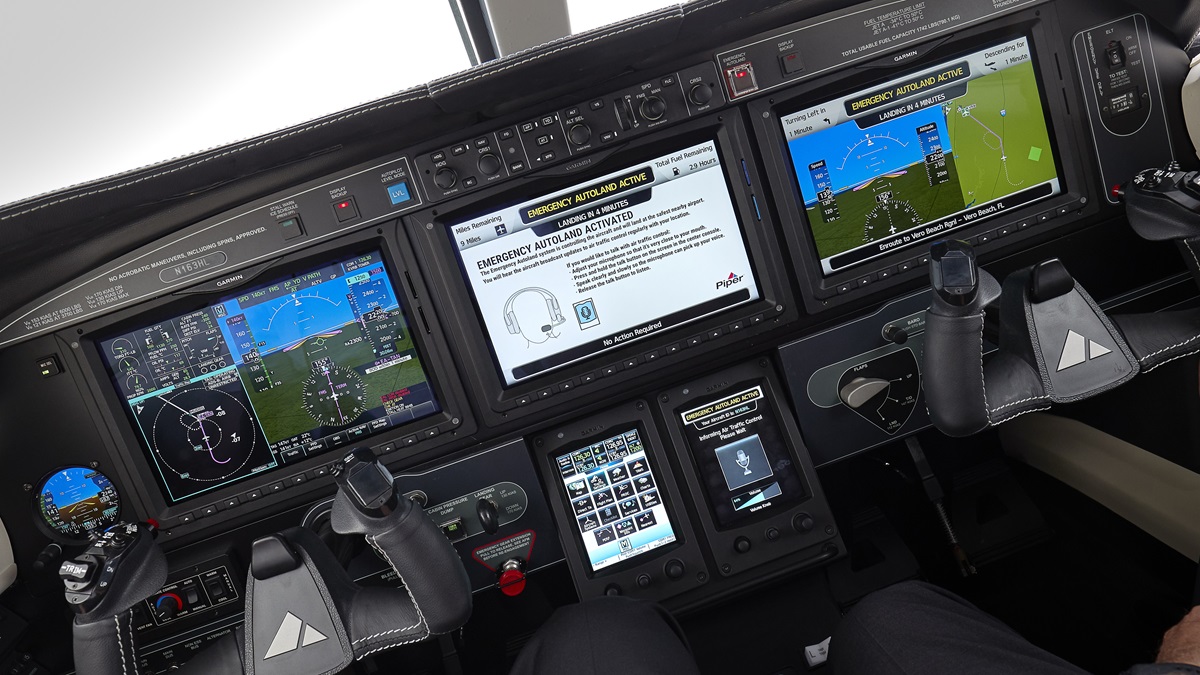
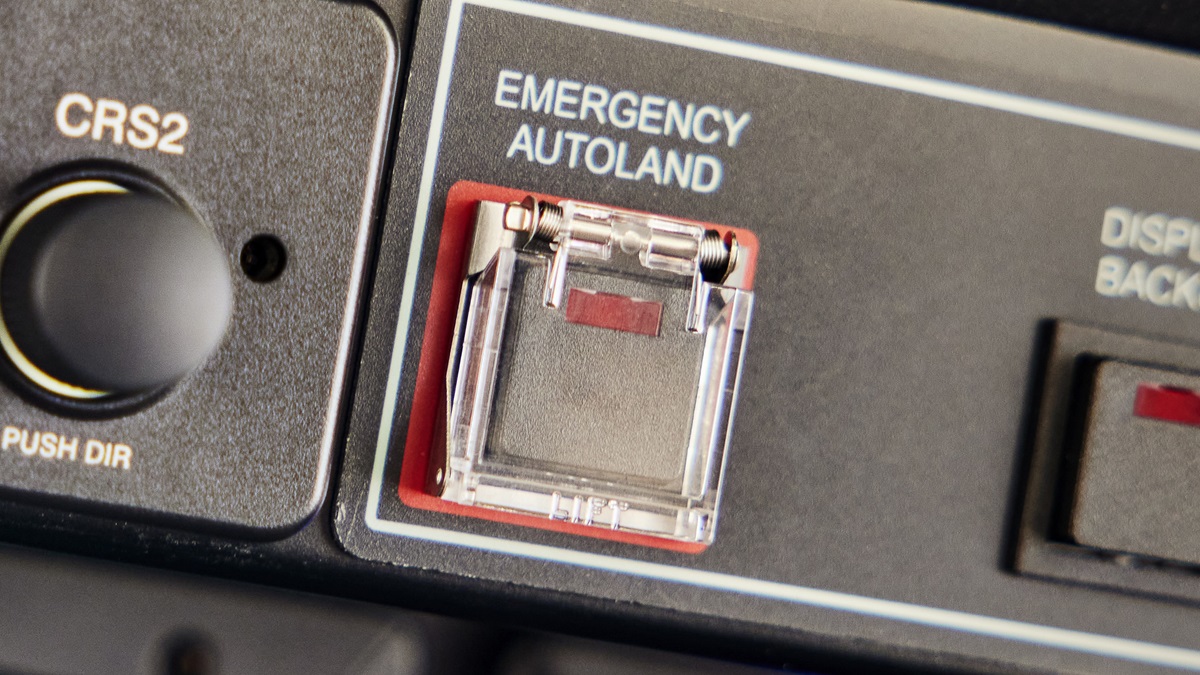
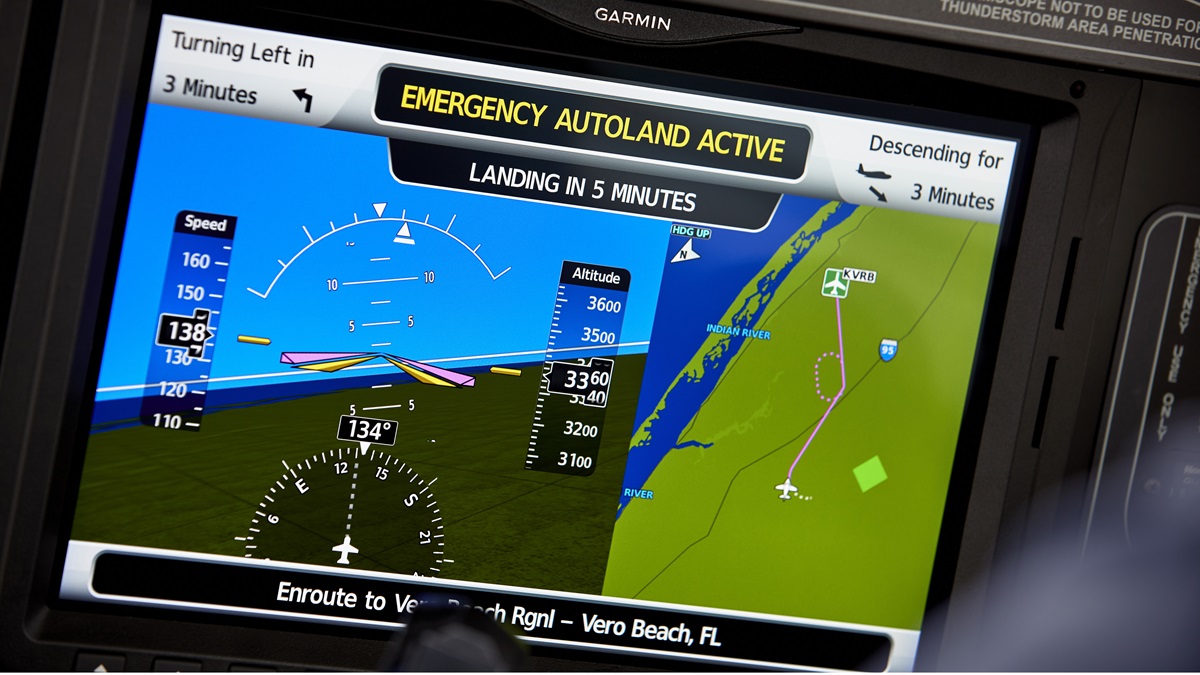
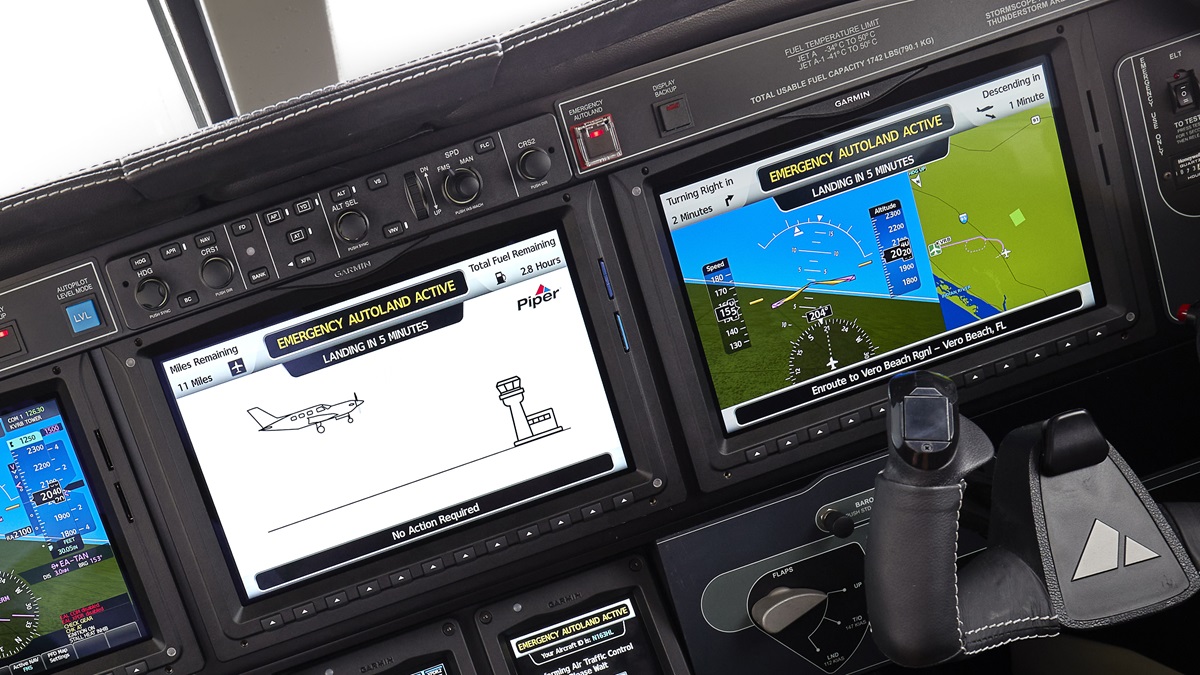
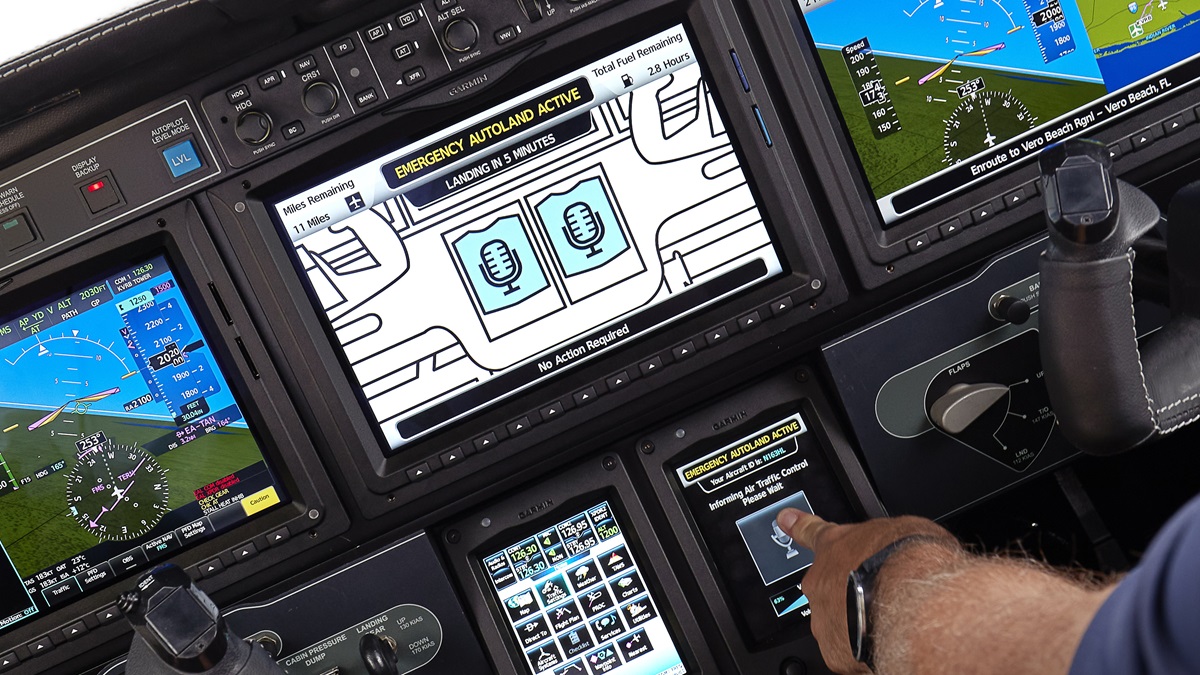
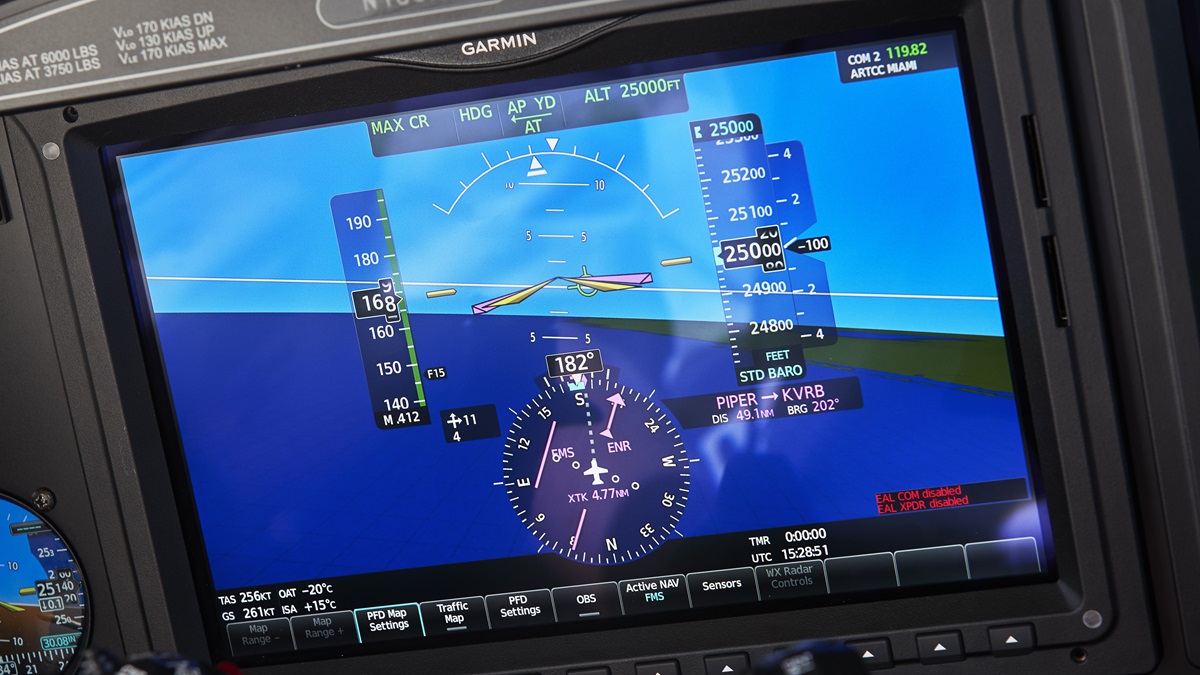
 aopa.org/aircraftguide
aopa.org/aircraftguide

